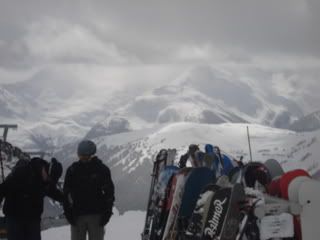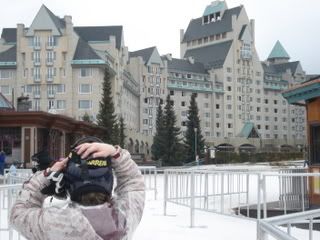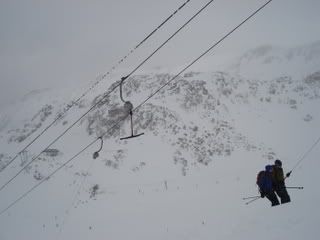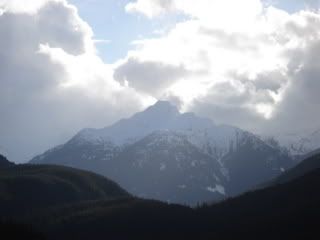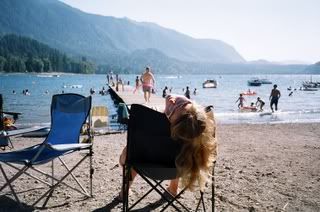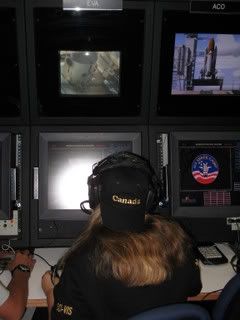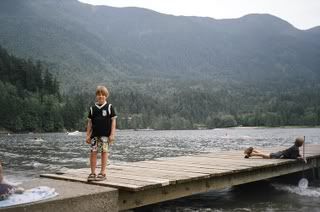Carole King/Martika, Written by: Carole King
I feel the earth move under my feet
I feel the sky tumbling down, tumbling down
I feel my heart start to trembling
Whenever you're around
Ooh, baby, when I see your face
Mellow as the month of May
Oh, darling, I can't stand it
When you look at me that way
I feel the earth move under my feet
I feel the sky tumbling down, tumbling down
I feel my heart start to trembling
Whenever you're around
Oh, darling, when you're near me
And you tenderly call my name
I know that my emotions
Are something I just can't tame
I've just got to have you, baby
I feel the earth move under my feet
I feel the sky tumbling down, tumbling down
I feel the earth move under my feet
I feel the sky tumbling down
I just lose control
Down to my very soul
I get a hot and cold all over
I feel the earth move under my feet
I feel the sky tumbling down,
Tumbling down, tumbling down...
Are You Ready For an Earthquake in BC?
Have you been seeing more commercials on "preparation kits", and "earthquake readiness"
British Columbia experiences over 1,200 earthquakes a year, 300 of which occur in the lower mainland and on Vancouver island. Almost all of these earthquakes are too small to be felt. However, a stronger earthquake could occur at any time. It may happen during the day or at night, on a weekend or a workday, in any season and in any weather condition.
The government knows more than it wants to scare you! Be ready, they are warning us...it's their way of saying "see we warned you so"
British Columbia is vulnerable to two types of earthquakes: those occurring within the earth’s crustal plates and those occurring at the interface between crustal plates. Earthquakes that originate within a plate are seldom greater than magnitude 7.5 and typically shake for less than one minute. In contrast, earthquakes that originate between plates are usually larger than magnitude 8.0 and the shaking may last as long as 3 or 4 minutes.
British Columbia is vulnerable to the largest type of earthquake called a “subduction” quake, which occurs between two plates. The Cascadia Subduction Zone is located approximately 100 kilometres west of Vancouver Island and earthquakes here recur every 550 years on average. The range of recurrence, however, varies from 200 years to 900 years. The last subduction earthquake was in January 1700 – 304 years ago.
The most powerful earthquake ever recorded in Canada is a magnitude 8.1 earthquake in the Queen Charlotte Islands--and the largest earthquake likely to have occurred in Canada is the 1700 Cascadia Earthquake with an estimated magnitude of 9.0.
What’s the largest earthquake possible?
The largest earthquakes recorded on earth are subduction earthquakes-- measuring magnitude 9.5 off the coast of Chile in 1960 and magnitude 9.2 in Alaska in 1964. Generally the size of an earthquake is controlled by the length of the faults on which they occur. The longer the fault--the stronger the potential earthquake. Currently, there are no known faults capable of generating a magnitude 10.0 or larger earthquake.
=======================
The Coming Catastrophe - An expert in such fields as advanced programming and database systems, Brent Miller discussed his involvement with The Horizon Project, which brings together numerous researchers and scientists. From analyzing a variety of ancient data and evidence, the group has concluded that Earth is about to enter a catastrophic phase, which occurs on a cyclic basis. Miller cited evidence for past global catastrophes, such as sunken ancient cities, polar ice samples containing cosmic dust, ancient accounts of the sun moving backwards in the sky, and missing ancient technologies. The catastrophe occurred from a sudden geographic Pole Shift, he said, explaining that this takes place as the solar system nears the 'Galactic Plain' (see graphic below). During this calamity, massive waves will wipe out 1/3 of the population, particularly those living on the coast lines, he warned, and another third will die within six months of the shift, due to the aftermath. He noted that Nostradamus, Cayce, Mother Shipton, the Mayan calendar, and current remote viewers all foresee a cataclysmic event taking place in the future. People can prepare by moving away from the coast, and planning out survival strategies of how they can live without the current infrastructure, Miller offered.
For more visit website.....http://www.coasttocoastam.com/shows/2007/01/29.html
or mainpage....
http://www.coasttocoastam.com/george/about.html
Preparations Kits should include:
WATER
Store water in plastic containers such as soft drink bottles. Avoid using containers that will decompose or break, such as milk cartons or glass bottles. A normally active person needs to drink at least two quarts of water each day. Hot environments and intense physical activity can double that amount. Children, nursing mothers, and ill people will need more.
Store one gallon of water per person per day. Don't forget your pets.
Keep at least a three-day supply of water per person (two quarts for drinking, two quarts for each person in your household for food preparation/sanitation).
Change this water every six months. Household liquid bleach to kill microorganisms:
Use only regular household liquid bleach that contains 5.25 percent sodium hypochlorite. Do not use scented bleaches, colorsafe bleaches or bleaches with added cleaners.
Add 16 drops of bleach per gallon of water, stir and let stand for 30 minutes. If the water does not have a slight bleach odor, repeat the dosage and let stand another 15 minutes.
The only agent used to treat water should be household liquid bleach. Other chemicals, such as iodine or water treatment products sold in camping or surplus stores that do not contain 5.25 percent sodium hypochlorite as the only active ingredient, are not recommended and should not be used.
FOOD
Ready-to-eat canned meats, fruits, vegetables.
Canned juices, milk, soup
Sugar, salt, pepper
High energy foods such as peanut butter, jelly, crackers, granola bars, trail mix; foods that will not increase thirst.
Vitamins
Foods for infants, elderly, persons with special dietary needs
Comfort/stress foods: cookies, hard candy, sweetened cereals, lollipops, instant coffee, tea bags.
Pet food, at least one ounce per animal pound per day.
Avoid foods like rice, pasta and dry beans that require a great deal of water to prepare. Remember to restock your food once a year. A three day supply of non-perishable food such as canned meats, fruits vegetables, energy bars etc. Be
sure to include only food that requires minimal preparation and no cooking preparation. The following is an example
menu.
Breakfast: Cans of juice, coffee, tea or milk; canned fruit; cardboard packs of wrapped granola bars or
cookies.
Lunch: Boxes of crackers or canned brown bread; canned sandwich spread; peanut butter in a plastic jar;
Velveeta (cheeselike and doesn't need refrigeration), dried fruit and hard candy; energy bars; nuts.
Dinner: Canned meat or seafood; canned spaghetti, ravioli, chili, stew, tamales. Other good choices are
canned beans or other vegetables, pudding cups, and ready-to-eat soups. There are single servings of
vegetarian Indian dishes in plastic pouches that have long shelf lives
FIRST AID KIT
Sterile adhesive bandages in assorted sizes
Assorted sizes of safety pins
Cleansing agent/soap
Latex gloves (2 pairs)
Sunscreen
2-inch sterile gauze pads (4-6)
4-inch sterile gauze pads (4-6)
Triangular bandages (3)
Non-prescription drugs such as Pain relievers, Anti-diarrhea medicines, Antacid, Syrup of Ipecac (used to induce vomiting with the advice of a Poison Control Center), Laxatives, Activated charcoal (used with advice from the Poison Control Center)
Various roller bandages
Scissors
Tweezers
Needle
Moistened towelettes
Antiseptic
Thermometer
Tongue blades (2)
Tube of petroleum jelly or other lubricant
TOOLS AND SUPPLIES
Paper cups, plates, and plastic utensils
Battery-operated radio and extra batteries
Flashlight and extra batteries
Cash or traveler's checks, in case banks are closed in the days following an earthquake
Non-electric can opener or a utility knife
Small fire extinguisher
Pliers
Tape
Matches in a waterproof container
Aluminum foil
Plastic storage containers
Signal flare
Paper, pencil
Needles, thread
Medicine dropper
Wrench, to turn off gas and water
SANITATION
Toilet paper
Soap, liquid detergent
Feminine supplies
Plastic garbage bags and ties
Plastic bucket with tight lid
Disinfectant
Household chlorine bleach
Poop bags and scooper for pet waste
CLOTHING AND BEDDING
Sturdy shoes or work boots (keep near your bed)
Rain gear
Blankets or sleeping bags
Warm clothing
Sunglasses (keep your spare eyeglasses in the emergency kit, too.)
DOCUMENTS
Will, insurance policies, contracts deeds, stocks and bonds
Passports, social security cards, immunization records
Bank account numbers
Credit card account numbers and companies
Inventory of valuable household goods, important telephone numbers
Family records (birth, marriage, death certificates)
**Remember to include special needs family members such as a baby or an older person might have. It is also good to store in a water proof plastic bag important family documents (passports, wills, medical records etc.) along with your earthquake survival kit.
Ready-to-eat canned meats, fruits, vegetables.
Canned juices, milk, soup
Sugar, salt, pepper
High energy foods such as peanut butter, jelly, crackers, granola bars, trail mix; foods that will not increase thirst.
Vitamins
Foods for infants, elderly, persons with special dietary needs
Comfort/stress foods: cookies, hard candy, sweetened cereals, lollipops, instant coffee, tea bags.
Pet food, at least one ounce per animal pound per day.
Avoid foods like rice, pasta and dry beans that require a great deal of water to prepare. Remember to restock your food once a year. A three day supply of non-perishable food such as canned meats, fruits vegetables, energy bars etc. Be
sure to include only food that requires minimal preparation and no cooking preparation. The following is an example
menu.
Breakfast: Cans of juice, coffee, tea or milk; canned fruit; cardboard packs of wrapped granola bars or
cookies.
Lunch: Boxes of crackers or canned brown bread; canned sandwich spread; peanut butter in a plastic jar;
Velveeta (cheeselike and doesn't need refrigeration), dried fruit and hard candy; energy bars; nuts.
Dinner: Canned meat or seafood; canned spaghetti, ravioli, chili, stew, tamales. Other good choices are
canned beans or other vegetables, pudding cups, and ready-to-eat soups. There are single servings of
vegetarian Indian dishes in plastic pouches that have long shelf lives
FIRST AID KIT
Sterile adhesive bandages in assorted sizes
Assorted sizes of safety pins
Cleansing agent/soap
Latex gloves (2 pairs)
Sunscreen
2-inch sterile gauze pads (4-6)
4-inch sterile gauze pads (4-6)
Triangular bandages (3)
Non-prescription drugs such as Pain relievers, Anti-diarrhea medicines, Antacid, Syrup of Ipecac (used to induce vomiting with the advice of a Poison Control Center), Laxatives, Activated charcoal (used with advice from the Poison Control Center)
Various roller bandages
Scissors
Tweezers
Needle
Moistened towelettes
Antiseptic
Thermometer
Tongue blades (2)
Tube of petroleum jelly or other lubricant
TOOLS AND SUPPLIES
Paper cups, plates, and plastic utensils
Battery-operated radio and extra batteries
Flashlight and extra batteries
Cash or traveler's checks, in case banks are closed in the days following an earthquake
Non-electric can opener or a utility knife
Small fire extinguisher
Pliers
Tape
Matches in a waterproof container
Aluminum foil
Plastic storage containers
Signal flare
Paper, pencil
Needles, thread
Medicine dropper
Wrench, to turn off gas and water
SANITATION
Toilet paper
Soap, liquid detergent
Feminine supplies
Plastic garbage bags and ties
Plastic bucket with tight lid
Disinfectant
Household chlorine bleach
Poop bags and scooper for pet waste
CLOTHING AND BEDDING
Sturdy shoes or work boots (keep near your bed)
Rain gear
Blankets or sleeping bags
Warm clothing
Sunglasses (keep your spare eyeglasses in the emergency kit, too.)
DOCUMENTS
Will, insurance policies, contracts deeds, stocks and bonds
Passports, social security cards, immunization records
Bank account numbers
Credit card account numbers and companies
Inventory of valuable household goods, important telephone numbers
Family records (birth, marriage, death certificates)
**Remember to include special needs family members such as a baby or an older person might have. It is also good to store in a water proof plastic bag important family documents (passports, wills, medical records etc.) along with your earthquake survival kit.





